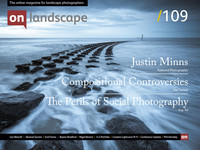Part 1: Simplicity vs Complexity (or is it both?)
A few years ago I wrote an essay for Lee Filters on composition. Regrettably it was more a rant against (what I perceived as) an over-use of rigid rules that prevails in some photographic quarters. I might have said what I thought composition isn’t, but maybe didn’t attempt to explore enough what it actually is.
This series will attempt to redress the balance. And given that this a subject dear to my heart, yet still difficult to define, it is in that sense an entirely selfish endeavour. Is it possible to articulate effectively how composition works? Can it ever be more than a subjective and opinion-based, or are there real empirical principles that are immutable? Is it ever possible to separate prejudice and personal preference from that which could be based in a universal law?
Composition can be rightly regarded as the ‘internal’ signature of the photographer. That is not to say that a photographer’s work will be instantly recognisable in every photograph, but with consistency and over time there is usually a recognisable personal voice, expressed in large part through composition. Light forms an integral part of composition, animating the space and giving weight and form to objects… in essence, light and composition become inseparable.
With each brief essay in the series I will attempt to analyse some of my own compositions (well, no-one else ever does, so I guess I will have to myself) and see if I can illuminate some recurrent themes in the compositional argument. I am using the series title, Compositional Controversies, because I expect, and hope, that it will be just that: controversial. I may well be starting with plenty of baggage, and assumptions of my own… and hope to surprise and, probably, contradict myself in the process.


